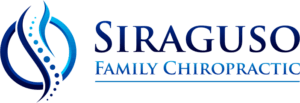Torticollis
Torticollis is a disorder than involves the muscles of the neck, causing the head to tilt down and rotate. The most common type of torticollis is congenital muscular torticollis. Babies have this condition at birth. However, if the condition develops after birth, it is called acquired torticollis which may be linked muscle spasms to other more serious medical issues. You may not notice that your child has a congenital defect for at least 6 to 8 weeks after birth. However, it is common for the symptoms to become obvious once and infant has more control over the head and neck. Some of the symptoms that you might notice in your child are head tilted to one side with the chin pointed to the opposite shoulder. The right side is more commonly affected in babies
with torticollis. Other symptoms include you feeling a short lump in the neck muscle, the head does not turn up and down or to the side easily.
Acute Torticollis
In acute torticollis or adult torticollis, muscle relaxants and pain medications have a limited effect on relieving pain. Patients often complain of having woken up with immobility and severe neck pain. The first line of treatment for patients presenting with torticollis includes intramuscular injection of pain medication, however, this often proves to be ineffective with only minor relief. Patients are also often prescribed over the counter muscle relaxants and
non-steroidal anti-inflammatory drugs. The symptoms of acute torticollis are vertebral joint fixation, muscle spasm, antalgia and severely restricted ranges of motion.
Chiropractic Treatment for Torticollis
The goal of chiropractic care for torticollis is to reduce the subluxation or joint dysfunction of the cervical spine, which is a common presentation in this condition. Chiropractors use a combination of soft tissue therapies, myofascial release, and spinal adjustments for rapid results in many cases of torticollis. Another approach is with adjunctive therapy, in which moist heat is applied to the patient’s neck before any chiropractic therapy. The purpose of this therapy is to ease pain and help relax the muscle to facilitate spinal adjustment and manual procedures. After adjunctive therapy, manual therapy may be performed to further increase the mobility of the patient before cervical adjustments. The patient is asked to turn his or her head as far as possible to the painful side, while in a seated position. The chiropractor holds the patients head during the entire procedure. The patient is then asked to relax, and the cycle is repeated several times until the patient has an increased range of motion and decreased muscle spasm.
At home therapy
See our article on Cervical Traction Device For Neck Pain for more information on at home therapies. The Myovive Cervical Traction Device may be beneficial for this condition.
Schedule an Appointment
If you or any of your loved ones would like to schedule an appointment Click Here!

